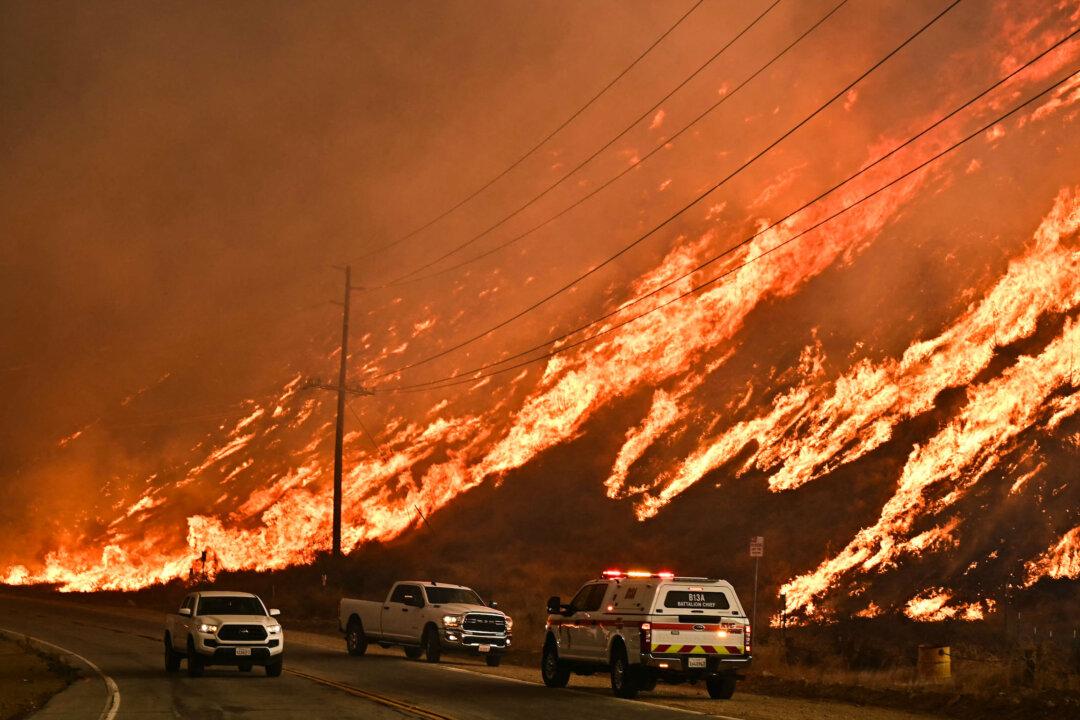A wildfire that broke out on Wednesday morning in a rugged mountainous area north of Los Angeles has exploded to more than 10,000 acres. The wildfire has led to mandatory evacuation orders for tens of thousands of people, including inmates at a Los Angeles detention center.
The fire, which is burning in both Los Angeles and Ventura Counties, was 14 percent contained as of 10:22 p.m. It has not claimed any structures, Los Angeles County Fire Chief Anthony Marrone said at a press conference Wednesday evening.





